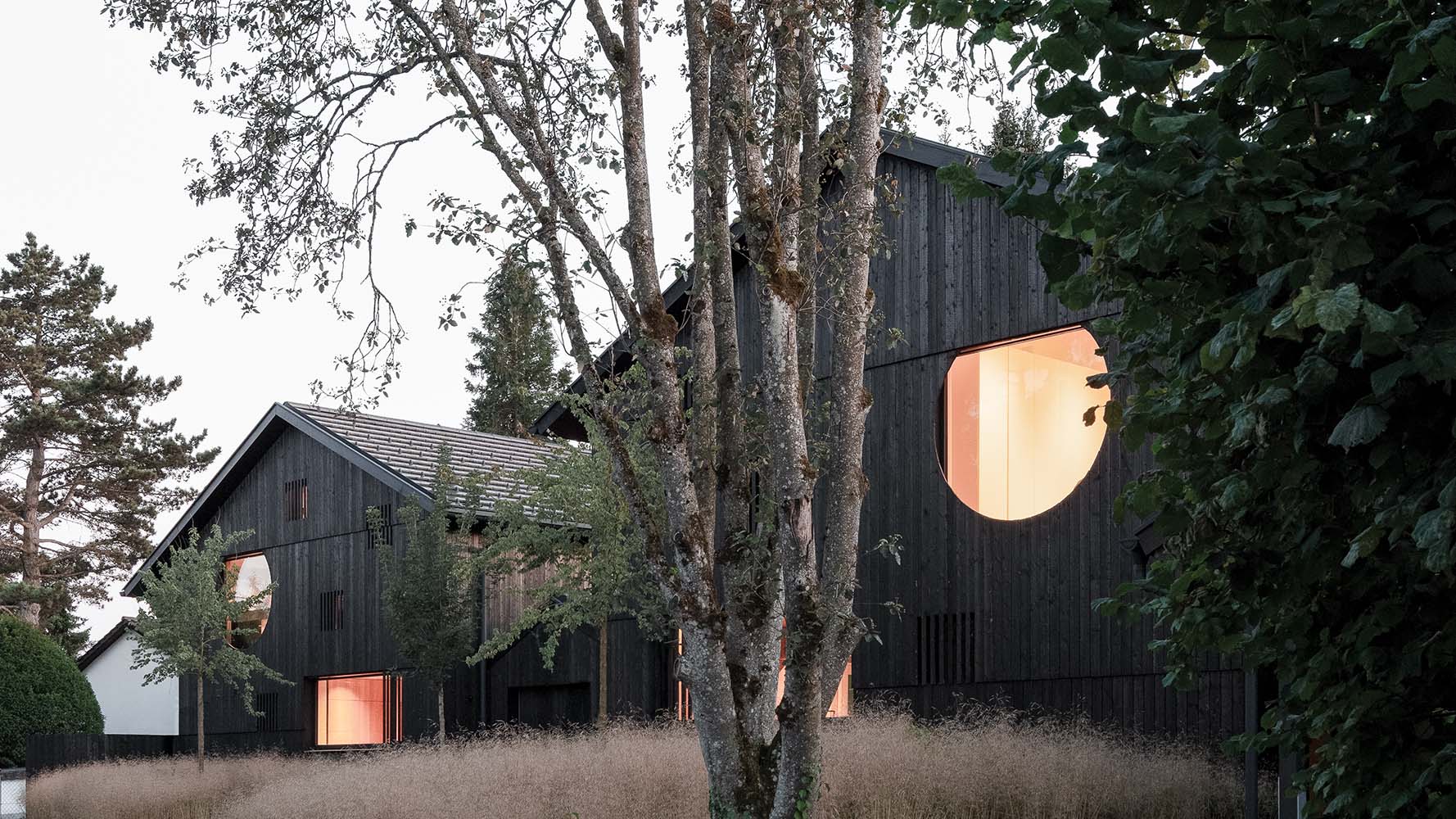
A Pair of Houses by Buero Wagner Offers a Clever Solution to Multi-Generational Living Near Munich
Söcking, Germany
Distinguished by its charred-wood facade and large circular windows, this striking project sits among houses hidden behind hedges on large lots, in a quiet residential area, a suburb of Munich, developed in the 1950s. Its dramatic face, however, isn’t the only thing that sets it apart: it’s actually two residences on one plot. That was the idea when architect Fabian Wagner, founder of Buero Wagner, was approached by a father who wished to build one house for himself and another for his son.
“It was a new chapter for him,” says Wagner of the father, a local business executive, who had shared an apartment with his wife before she died. “He always wanted to become an architect; at one time in his life, he wanted to build his own house.”
The nearly identical houses are located in Söcking, a village by Lake Starnberg, in the foothills of the Alps. Here, as in many of areas nearby, there has been a push for densification, as more and more residents move out of central Munich. “The area has quite large building plots,” says Wagner. “The local officials don’t want to create new plots that extend the borders of the villages, so they try to densify inside.”

Rather than being hidden behind hedges, the paired houses have an open front yard of tall grasses (above and top of page). Photo © Kim Fohmann, click to enlarge.
Connected by two central garages, Houses with One Pillar replaces an existing 1950s residence built from the low-cost materials typical of the postwar period. That structure’s location at the center of the lot made it difficult to configure two houses there. With a slight offset between the two new structures creating a barely detectable zigzag in plan, the paired houses could be set back from the street, making way for a front yard of tall grasses with a connection to the neighborhood. This public face contrasts with a private garden at the rear of the site, reached by way of stepping stone paths between the houses and their respective outer garages, where large overhangs, a vernacular reference to the area’s agricultural buildings, nearly touch. “That’s kind of a transition space,” says Wagner. “You have dark wood, and then you go through a darker middle area, and then it opens to a flower garden.”
This public to private sequence is echoed inside. Organized differently to meet the needs of the various generations, including two grandchildren, both homes arrange private space, such as bedrooms and study areas, on the timber-framed upper floor, while the ground floor, with a concrete structure, is organized so the street-facing kitchen communicates with the neighborhood. The living area looks out to the rear garden through a generous window nearly filling the wall.

1
The ceiling structure and elevation changes help define ground-floor spaces (1 & 2). Photos © Kim Fohmann, click to enlarge.

2
It’s here, on the houses’ ground floors, where their namesake pillars reside (there is one pillar per house). To make the relatively compact residences feel more spacious—each footprint is about 1,000 square feet—their kitchen, living, and dining areas were designed as one large, open room supported by a single column. In lieu of walls, changes in floor elevation and of beams supporting the slab above distinguish the zones. Left exposed, the structure—as well as the concrete kitchen counter integrated into the pillar of the father’s house—becomes part of the design.
“Everything has its place and has that place not only for structural reasons, but as a design element,” says Wagner. In the end, these two separate but connected dwellings offer both privacy and closeness. Father and son can live their own lives and still support one another—like the pillars that support their homes.
Click plan to enlarge

Click section to enlarge

Credits
Architect:
Buero Wagner — Fabian A. Wagner, Edwin Hoffman, Louise Daussy, David Lachermeier, project team
Engineers:
Ingenieurbüro für Baustatik und Konstruktion Karl Wagner (structural); Elektro Stürzer (electrical); Gipser Haustechnik (heating and plumbing)
Consultants: E2WO (energy); Landschaftsarchitektur Meyer-Fey (landscape)
Client:
Withheld
Size:
7,100 square feet
Cost:
Withheld
Completion Date:
January 2025
Sources
Wood Cladding:
Mocopinus
Insulation:
Steico
Concrete:
Rogorsch + Strobl Bauunternehmung
Timber Frame:
Loy Holzbau
Windows and Doors:
Josko
Skylights:
Velux
Wood Floors:
Trapa
Cabinets:
Abler
Lighting:
Betonlicht, Delatlight, Nordlux
Lighting Controls:
Gira
Photovoltaic System:
JinkoSolar
Heat Pump:
Viessmann